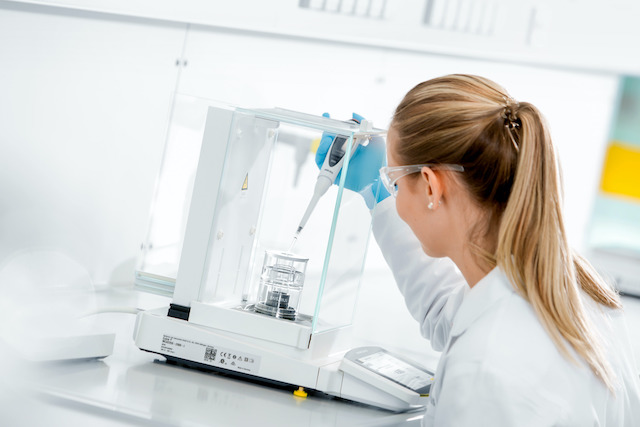
Proper cleaning and decontamination of pipettes are essential.
Pipettes are precision instruments whose performance can be seriously impacted if not appropriately maintained. To help keep the level of purity that is crucial in various laboratory applications, proper cleaning and decontamination of pipettes are crucial. Cleaning refers to the removal of any type of foreign materials from the pipette, like dust, proteins, nucleic acids, buffers, and salts. Decontamination refers to removing or killing microorganisms like viruses, bacteria, and fungi. It also refers to properly removing or neutralizing any chemicals and other radioactive materials. Read on for a handy cleaning guide for your lab’s pipettes!
- Cleaning refers to the removal of any foreign materials from the pipette, like dust, proteins, nucleic acids, buffers, and salts. Examples of Cleaning Agents: Pure (Type 3) or Distilled water, Detergent, sodium hypochlorite, nucleic acid removal agent, nuclease removal agent, DEPC (Diethyl pyrocarbonate), and UV radiation.
- Decontamination refers to removing or killing microorganisms like viruses, bacteria, and fungi. It also refers to properly removing or neutralizing chemicals and other radioactive materials. Examples of Decontamination Agents: Ethanol, isopropanol, Sodium Hypochlorite, Hydrogen Peroxide, Quaternary ammonium radiation
Read on for a handy cleaning guide for your lab’s pipettes!
Pipette Cleaning
Pipettes provided by the Lab people are designed with end-user applications in mind. Specifically designed to be simple to clean, have as many autoclavable parts as possible, and tolerate various cleaning reagents. While selecting solutions for cleaning and decontaminating pipettes, consider the liquid or reagent that has been pipetted. Also, check to see if the cleaning solution is compatible with the different pipette materials and would not have any adverse effects.
Daily Cleaning of Outer Pipette Surfaces
To clean and decontaminate the actual outer surface of your pipettes, use a disinfectant liquid or some mild detergent. A good one is 70% ethanol with a soft, lint-free cloth. Then carefully clean off the surface of the pipette with a moist cloth and wipe it dry. Pay close attention to the tip cone. Always check the chemical compatibility between pipette materials and the disinfectant or decontaminated liquids. Always change the safe-cone filter regularly with tweezers that are provided with the pipette. Don’t let fluids enter the inner parts of your pipette, either.
Cleaning the Lower Parts of The Pipettes (Three Months)
The frequency of pipette cleaning and maintenance depends on how heavily the pipette is being used and which reagents it is being used for including biohazardous or corrosive solutions. For a pipette used daily, we recommend you clean it and decontaminate it while checking its performance every three months. However, cleaning and decontamination should always be done after over-aspiration or when the pipette has been contaminated already. Check your cleaning and decontamination protocol in the pipette user manual and the chemical compatibility of the selected cleaning solutions for your pipettes. Always check the pipette performance after you open the lower parts. Pipette calibration is an integral part of Good Laboratory Practice (GLP), which should be done at least twice a year at the bare minimum.
FOR ALL ISO 17025 CALIBRATION SERVICES, CONTACT LAB PEOPLE TODAY
The Lab People Inc. is a trusted provider of laboratory equipment, services, supplies, and rental equipment for you and your laboratory. As an ISO 17025 accredited service organization, we stand behind our services with 100% satisfaction guaranteed for all of our customers. We offer on-site and off-site calibration services for balances, pipettes, moisture analyzers, force measurement, test weights, and more. Services include preventative maintenance, SQ-Min, IQOQ, repairs, legal for trace/placed in service, verification, and more.
For more information about how we can assist you, visit our website, email us, or call us at 1-800-296-2001!
Do not forget to follow us on Facebook, Twitter, and Linkedin!
